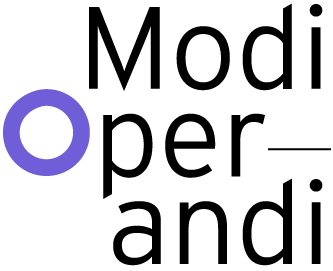POETICS: CHAOS OR DIFFERENTIATED DETACHMENT
The numbing effect of the metropolis seems to be caused by the impossibility of digesting its chaotic experiences while simultaneously negotiating multiplicities of relationships. One could argue that nowadays the chaotic complexity rooted in the spatial experience of the surface condition is moving towards, or has begun to overlap, the ‘original chaos’ of sensory experience. In his reflections on ‘poietica’, Paul Valéry used the term ‘original chaos’ when describing the two constituent parts essential to the mental life of a ‘highly developed’ human being.[5] Valéry distinguished between the efficiency and utility of social interaction (which is inherently limited) and the full experience of a personal mental state (which lies at the basis of artistic practice and is potentially unique). To retrace this ‘original chaos’, Valéry argued, entails acceptance of the entire range of sensory impressions, including ‘personal impressions – the spots and stains – the “mistakes”’.[6]
Valéry used the term to clarify the specific limitations that result from the emergence of language and discourse. Representational devices such as words are invented to describe the original chaos, i.e. all matter and thoughts, concepts and things/objects in the world around us. In themselves, words are devoid of content but acquire their meaning through an historical process. However, Valéry warns us that meaning has a tendency to become rather fixed, at least in linguistic representations. The renewed opening up of sensorial experience towards the original chaos would ‘guarantee’ the endless fabrications of language games and sustain a wide variety of linguistic genres, from prose to poetics, idiosyncrasies to platitudes, and from chatter to debate. In this sense, the process of becoming aware of the original chaos is simultaneously a breaking open of fixed meanings and a deliberate attempt to detach oneself from the direct relationships embedded in discourse.
If the characteristics of contemporary urban spatial experiences can indeed be considered equivalent to the explicit nature of this ‘original chaos’ of sensorial experience, the contradiction embedded in this comparison is even more intriguing. Valéry describes a personal mental state which is not shared with others, as opposed to the social space which is, in principle, shared and filled with various forms of social control and discipline. The form of isolation Valéry seeks for artistic practices, and which is reminiscent of Nietzsche’s ‘light solitude’,[7] becomes an incredibly difficult, if not impossible, position to maintain in the current state of surface conditions described above, since the surface conditions presuppose an ability to navigate the different social structures, networks and constellations which have emerged. The ‘unbearable lightness’ of the surface condition seems to stand in stark contrast to the sensibility and sensitive isolation needed for artistic production. However, perhaps the fault lines that arise from this complex, schizophrenic situation – namely the cracks and open ends that extend infinitely within the various relationships, practices and discourses in which one engages – can initiate a different state of imagination. This imagination would instigate a widening of the discourse towards an architectural design process that emerges from the characteristics of the contemporary surface condition itself.
If, as Valéry has defined it, architecture is an ‘ode of space to itself’[8] then the solitude required for architectural production should aim towards achieving a mental state that anticipates the poetic.[9] At this point, two distinct historical interpretations should be mentioned with regard to the poetic and the poetic experience of space in architecture. These interpretations became apparent with the increasing use of the term poiesis in postmodern debates. The first understanding of poiesis refers to the Greek meaning of poetics as ‘making’,[10] namely the bringing together of the immaterial and the material, the meeting of thought and matter, which is mostly discussed with reference to poetry in literature. The second understanding refers to poetics as ‘creation’, the processes out of which something transpires that is either an organism (auto-poiesis,[11] which is self-generating and basically creates more of the ‘same’), or an artificial construct (allo-poiesis, which fabricates something ‘other’).[12] Following the argument thus far, any form of the poetic nowadays is probably only to be found in the superficiality and absence of any fixed ‘ground’ within the described current social constructs. If a form of ‘detachment’ is imperative when considering the consequences of the surface conditions for architectural design processes, then the issue of representation becomes equally crucial when, as I mentioned above, the relevant tools for recording also need to be reconsidered. In itself, detachment is already inherently part of any form of representation, including the architectural drawing, as both words and lines are disconnected from the object they intend to represent. This leaves only the form and degree of detachment as the ‘means’ towards achieving the levels of sophistication required to discern minor differences. As a consequence, both the tools for recording and the representational devices require less rather than more precision. However contradictory this may seem, the objective should therefore be an attempt to detect and analyse a greater number of minor differences through the implementation of a set of tools that ‘suffer’ from an increased lack of precision. This process of disconnecting from the apparatuses allows for an easier access to the ‘others’.
